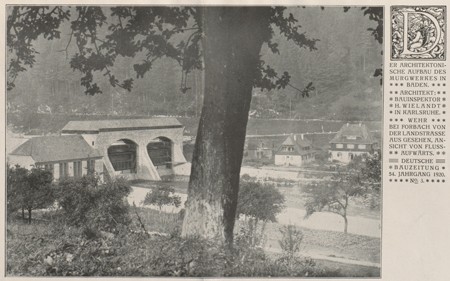What architectural and political role did the construction industry play in Germany from World War I through World War II? The answer to this question lies in
My work at CASVA (with Ivo van der Graaff, research associate) has centered on the historical problem of the German construction industry. To address this topic, we have developed a database of projects from the important architectural journal Deutsche Bauzeitung as well as working draft visualizations of that database using the computer mapping environment of geographic information systems (GIS). We have also compiled a comparative database from the archive of Dyckerhoff & Widmann, one of the largest construction firms in Germany during this period. The visualizations of these databases in GIS point us to patterns of individual buildings and building types that were previously invisible in the architectural record and now arise in need of further exploration. Thus, for example, Carl James Bühring’s housing estate in Leipzig-Mockau (1919–1923) suddenly appears as much more relevant to architectural debates and interests than previously assumed. The
A study of the production of the built environment more broadly means attending to the construction process as worthy of its own history and concentrated analysis, a topic that takes up the tradition of social art history emanating from Arnold Hauser (1892–1978) and others. Digital methods allow us to ask such broad social questions. Naturally, there is no one single source for the construction industry, and the number of buildings, large and small, vernacular to high design, is almost impossible to capture. Digital methods, however, are meant to tackle large datasets, and the ability of GIS to map spatial information can help us to address this large-scale problem.
Combining the relational capacity of both historical evidence and the methods of digital mapping is a powerful means of visualizing the social dynamics and significance of architectural production. Visualization in this sense is morphological. It gives form to otherwise hidden connections between individual objects and social developments. Digital mapping exposes new problems and areas of research, particularly around the mediating role that culture itself takes in developing and reproducing dominant social structures. In addition, it points to how the capacity for certain cultural, political, or economic events to dominate a social field builds gradually in micro-durations. In these ways, mapping information from historical journals and other archival sources can point to potential activators or inhibitors of social and cultural change in the history of architecture. Such
